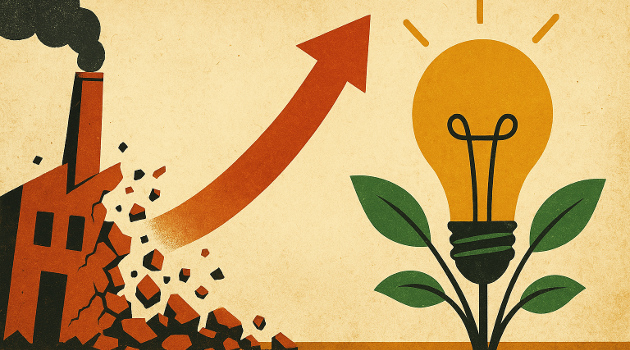Let’s start today’s column with a refresher look at my video on creative destruction.
I had two goals with this video.
- First, creative destruction can be painful, but it is an inherent and necessary part of the growth process.
- Second, creative destruction happens from all sorts of trade, both within borders and across borders.
One implication of creative destruction is that you want entrepreneurs and businesses that are very good at “creative” and you don’t want governments hindering “destruction.”
With that in mind, look at this chart from a recent report from the McKinsey Global Institute. It seems that super companies are very important (just as super entrepreneurs are very important).

Here are some excerpts from the report.
The world needs robust productivity growth more than ever… If firms do not increase their productivity, economies don’t, either. …Customers and employees are typically the biggest and most immediate beneficiaries of productivity growth. Productivity growth is a win-win for all. This research finds that a relatively small number of firms making bold strategic moves generated the majority of productivity growth… This was a more concentrated, dynamic, and sporadic pattern than existing literature tends to highlight, with progress on productivity being defined by a few firms moving a mile rather than many firms moving an inch. …Fewer than 100 firms in our sample of 8,300—a group that we have dubbed Standouts—accounted for about two-thirds of the positive productivity gains in each of the three country samples we analyzed. …To give a sense of how important a single firm can be, just another dozen or so of the largest Standouts could have doubled productivity growth in their entire country. The number of firms that were responsible for the largest drags (negative contributions of at least one basis point) on productivity growth—we call them Stragglers—was even smaller. Only 55 Stragglers accounted for 50 to 65 percent of the firm-level productivity drag in the three country samples.
Speaking of stragglers, notice the right side of Exhibit 6.
This is why it’s not good to have bailouts. Weak and poorly managed firms drag down the overall economy.

If this doesn’t exhaust your interest in the topic of creative destruction, I invite you to peruse my three-part series here, here, and here.


